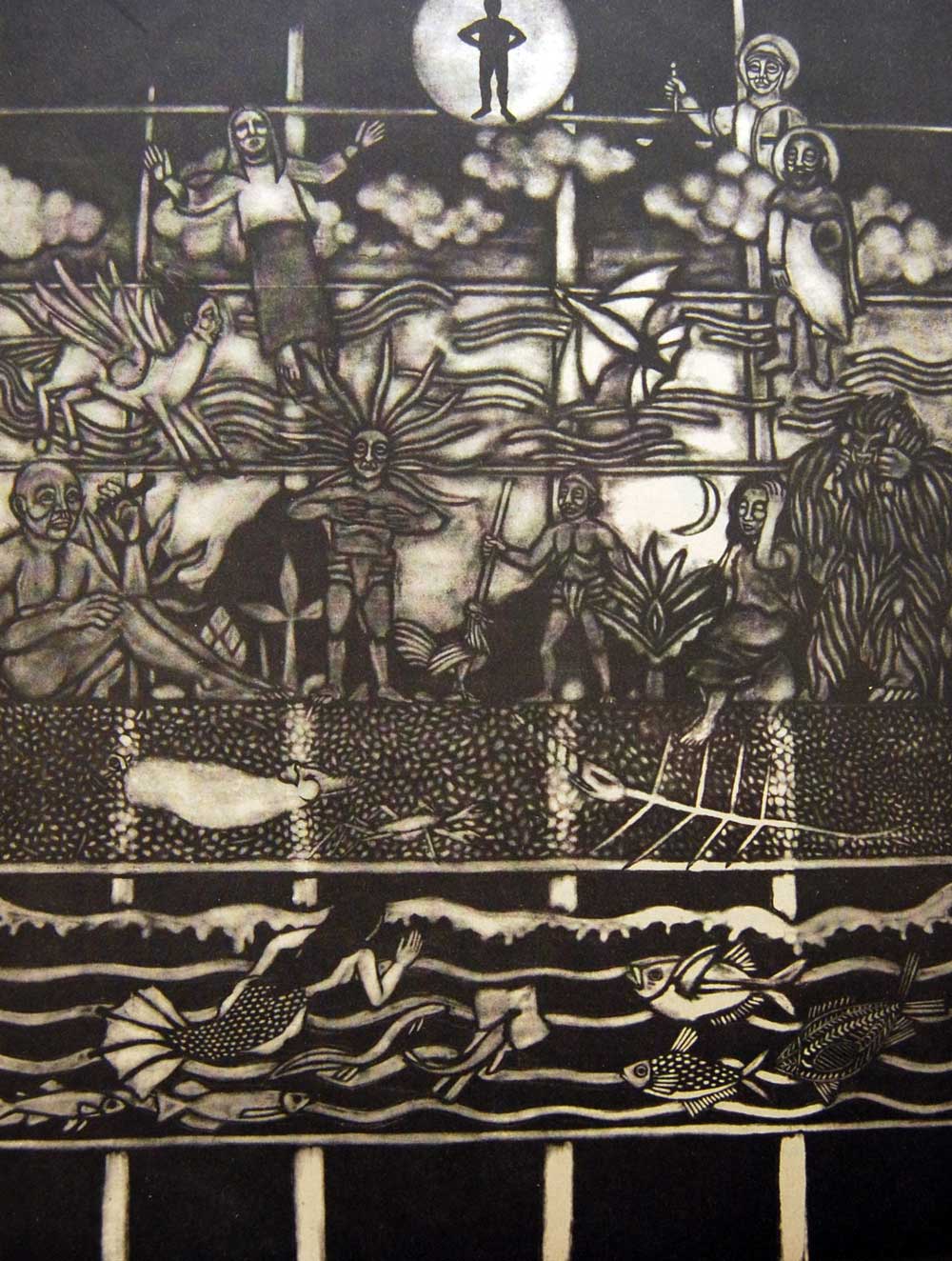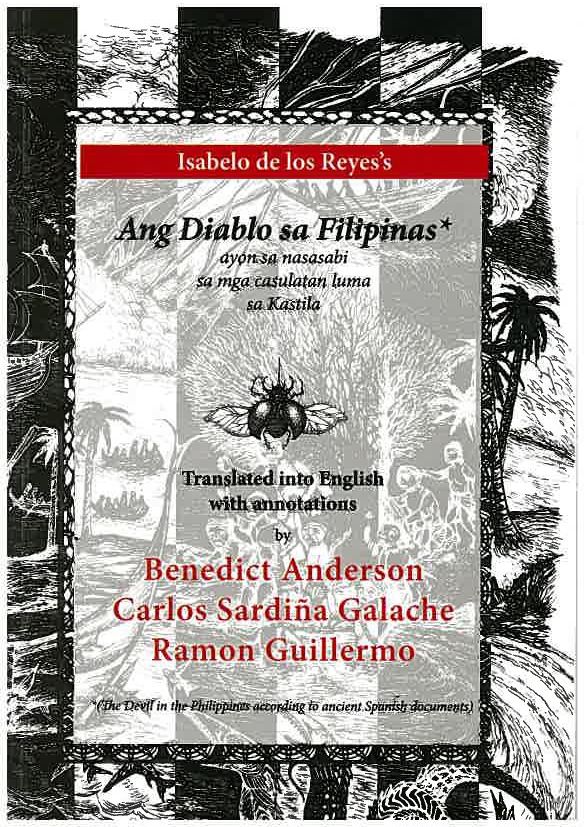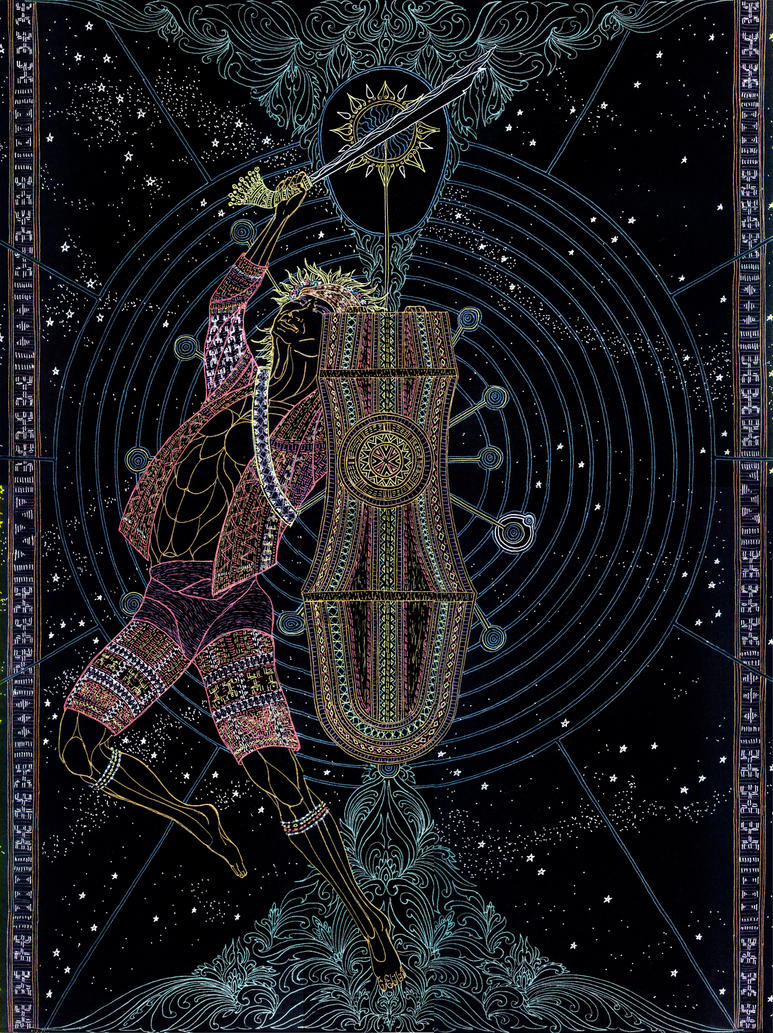Pre-colonial Filipinos had their own concept of evil in the form of malicious spirits that carry diseases, infertility and at times, death. Without the intervention of Babaylan and Anito (ancestral spirits) to protect their community by channeling the powers and miracles from the pantheon of gods in Kaluwalhatian, perhaps our ancestors would be forever bounded in the cruel gauntlet of devilry.
Enter the beginning of Spanish conquest. Through the efforts of the friars to eliminate our “barbaric and savage” way of life, our ancestors were assimilated into a much more orthodox and systematic body of belief in the form of western religion. But along the way, as our local Anitos became saints and our veneration to the sun, moon and mountains was replaced by Holy Mass every Sunday, evil entities in our own local lore wore a new mask with the same spirit of familiarity deep in its core.

Devils and Engkantos Intertwined
Our ancient belief system is entirely classified under the animistic category wherein the people revered the spirit of nature and all it’s constituents (plants, animals and natural landscapes). These spirits that act as the custodian of nature and bring blessings as well as curses to the people, depending if they decided to preserved or destroy it, are known to be Engkantos (from the Spanish term “encantada” or “encantar” – which means to be charmed or bewitched).
These prevailing beliefs were seen as a great hindrance towards the aims of friars in evangelizing the Indios. That is why they classified these amoral nature spirits into localized demons that would eventually lead the native’s soul to hell if they will not denounce them and start embracing Catholicism.
The tale of the fallen angels, together with Lucifer, cast away from heaven due to their rebellion towards God is a classic story that narrates the origin of Engkantos – which further strengthened the claim of the friars in persuading our ancestors to eventually convert from their animistic beliefs.
Demonizing local gods is not a new method to introduce a new belief system to a much “inferior” group. Conversion of gods to demons is observed throughout the history of religions. Pagan gods like the half man-half goat Pan from ancient Greece and the horned Celtic deity Cerunnos are changed into what we know today as the mediocre image of the Devil. Originally these images were worshiped as benign gods that always helped the mortals.
Conquest that brings both Angels and Devils
Eventually, Catholicism was accepted by Filipinos. The majority of us are still reciting The Lord’s Prayer, The Rosary, and attending Holy Mass every Sunday. Our local languages were also influenced by the teachings of Catholicism. Words such as Anghel, Santo/Santa and Santisima Trinidad were added to our common vocabulary and become staple expressions. But it’s not only the holy names in which the friars shared with us. As their conquest reach its pinnacle, abhorred names of their demons and devils, such as Demonio and Diablo, came along and penetrated our whole culture.
Names such as Kapre and Sirena surprisingly arise from Spanish colonizers although most of us believed that they are part of our own vernacular. Kapre or Cafre (originated from the Muslim world Kafir) is actually the term used to describe the Non-Islamic African slaves brought by Portuguese traders to the Philippines. On the other hand, Sirena is actually a Late Latin (a language widely used before by the Catholic Church) word which depicts alluring women of the sea that enthrall sailors with their beautiful voices only to find out that it is a trap to drown them in the ocean. Then there are tales such as that of a headless priest, or Pugot, that haunts churches. These obviously stem from the ghost and demon lore that the Spaniards brought in our land.
Faith, Superstition or Both?
If the Spaniard’s aim to spread faith throughout their expedition is to be seen by them as noble, our resident Folklorist, Isabelo de los Reyes, sees this whole agenda in a different light. In his book “Ang Diablo sa Filipinas ayon sa nasasabi sa mga casulatan luma sa Kastila” (The Devil in the Philippines according to ancient Spanish documents) Isabelo writes comedic stories that revolve around the friars observations of our animistic beliefs and superstitions as well as their experience in encountering “demonic” spirits in our country. The stories are based on the actual documents written by chroniclers in the Philippines who were more or less Spanish priests.

Throughout the book, de los Reyes showcase that the friars and Indios are so much alike because they all cling to superstitions coming from the fantasies projected from their own religion. This means that while friars are belittling and complaining about our own “primitive” way of of thinking, they become blinded to the fact that their Medieval Catholicism also holds primitive ideas. As stated by Benedict Anderson, who translated El Diablo into English, Isabelo writes this comedic yet provocative book because he believe Filipino “should learn to see Catholicism’s imaginary in the same category as paganism’s – pure folklore.”
Pre-Hispanic beliefs and practices still manifest in rural and even in urban areas of the Philippines despite the fact that the majority of us are Catholics. Hence, syncretism began to form; a fusion between the enduring animistic inclination of our ancestors and the doctrines of Roman Catholicism, as stated in the article of John N. Schumancer, S.J entitled “Syncretism in Philippine Catholicism: It’s Historical Causes”. After all, we can’t just leave the things that helped us in a spiritual and psychological sense before the introduction of the cross and Bible in our nation.
All of the gods and demons have abandoned us.
Among the countless gods, themes and symbolism governing every culture and their myths, is demon lore. Just as there are benevolent spirits that aid man in their daily lives, there will always be contrasting diabolic entities whose sole purpose is to torment and harm people. Like every ancient tale reinvented into a more modern version, evil forces always exist together with the good ones; a clear indication of the prevailing dualistic nature that puts the world in equilibrium.
With the emergence of Catholicism, our culture has thoroughly become a hybrid one. With the mixture of western and eastern beliefs and practices, it seems that we have the best, and worst, of both worlds. This unlikely union produces pros and cons quite similar with the clash of good and evil forces in our stories.
Catholicism can shape our values as humans, but as I read this line from the book of Isabelo delos Reyes – taken from the notes of Diego Aduarte, a Spanish missionary- that talks of the lament of Apolaki (Sun and War god), I can’t help but to feel a pang of sympathy towards the spirits and entities who once protected and guided our ancestors and are now banished from their homeland. Worse, some are demoted to lowly creature who are forever lost and trapped in the midst of both the present and past:
“Umiiyak ako sapagkat nakita kong natupad na ang malaong kong pinangingilagan, na tatangap kayo ng mga taong taga ibang lupa maputi ang ngipin, mahahabang barong na tila alampay. Lalagyan nila ang inyong mga bahay ng dalawang tulos na nagkakasalisi (ito ang Cruz) at nang ako ay lalong mahirapan, ako nga ay papanao na at dahilan sa taga ibang lupa ako inyong iiwan bagamat ako ang dati nyong Panginoon”
(I weep to see the completion of what I expected for many years, namely that you would welcome some foreigners with white teeth and hooded heads, who would implant amidst your houses crossed poles (Crosses) to torment me all the more. I am leaving you to seek people who will follow me, for you have abandoned me, your ancient lord, for foreigners)

Currently collecting books (fiction and non-fiction) involving Philippine mythology and folklore. His favorite lower mythological creature is the Bakunawa because he too is curious what the moon or sun taste like.


